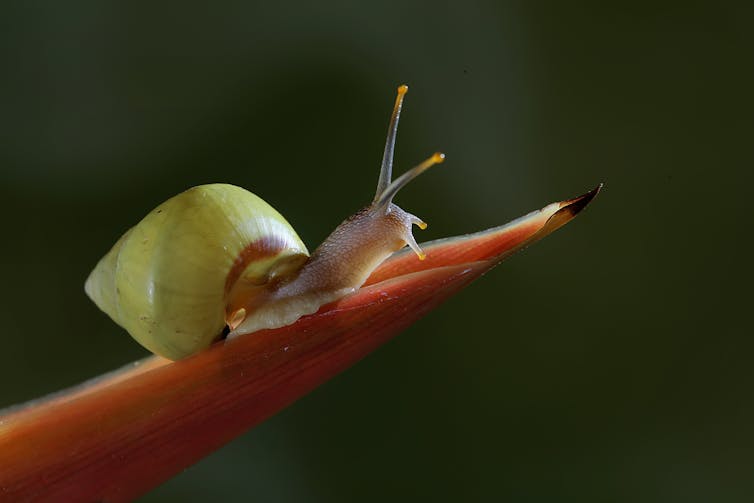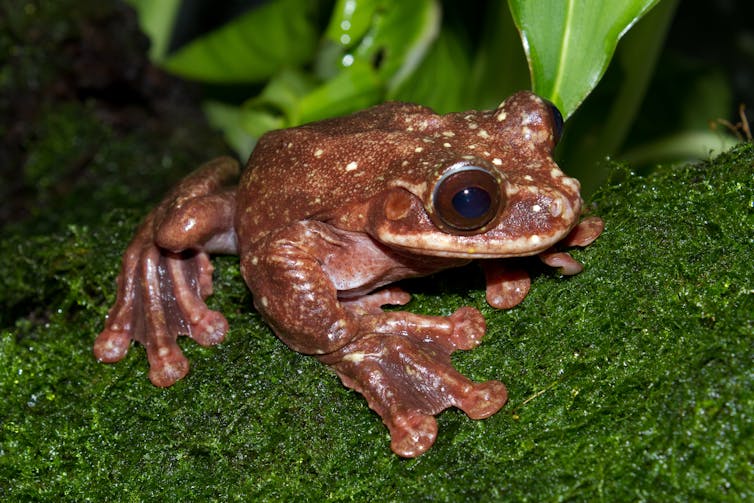Lonesome George was discovered motionless in his enclosure, one morning in June 2012. Overnight, George had taken not only his final breath but the final breath of his entire species, the Pinta Island tortoise, as it faded into extinction.
Obituaries for George soon followed in the New York Times, the Economist and a host of other outlets as befits an extinction celebrity.
However, as we enter what may be the sixth mass extinction in Earth’s history, there isn’t always an equivalent outpouring of grief when a species slips away. For example, how many column inches were afforded to the bean snail after its extinction in 2016?

One way to test if we humans collectively care about extinctions is to peer into our online behaviour and measure what we say and do. Enter culturomics. In a world where we produce mountains of online data every day, the field of culturomics takes a big data approach to measuring the zeitgeist of cultural change, from predicting the death of certain words to tracking collective mood shifts after economic crashes.
To understand if we really care about the bean snail and other recently extinct species our research team tracked how people referred to species on X (formerly known as Twitter) before and after the announcement of their extinction. The results are now published. It seems we do care, but only briefly.
After a species goes extinct, tweets referring to it explode. In many cases this is perhaps to be expected. For example, following the extinction of the western black rhinoceros in 2011 there were up to 4,000 tweets a day compared to the single digit number of tweets before its extinction.
Through delving further into these patterns its clear that several heavy hitting influencers, such as famous comedians, also drove responses into hyper-drive, a pattern seen across all the species studied.
But what of those more obscure species, do we really care when bean snails no longer exist?
Yes. Even obscure species such as the bean snail, the Bramble Cay mosaic-tailed rat and Rabbs’ fringe-limbed treefrog were associated with increased responses after their extinction. Moreover, such species showed that our reaction to extinction is also not just a provincial affair but a global one.
Through geolocation of tweets it was clear that patterns changed from a relatively parochial conversation before the extinction to a more collective global one after the announcement of the extinction.

It also turns out that we are in mourning during these periods with tweets predominantly featuring words associated with sadness and loss. “RIP” was one of the most common phrases to feature. However, in this fast paced world it seems like this response may be all but fleeting.
Digital gravestones may help conservation
There may be a silver lining to all this grief. When analysing page visits to Wikipedia, a similar but slightly different trend emerges.
While we found the largest peak in social media posts was after extinction, we also found a much slower drop off. While social media seems to function as the funereal process for each species, sites like Wikipedia function more like their gravestone. A place people return to in order to remember, or perhaps discover, what we once had.
This social empathy, both long and short lived, may aid in conserving those species that are currently on the brink. Many conservation funding projects are fundamentally based on wide public support, either through direct funding or policy change. For example, increased ticket sales in zoos due to public interest in certain species can be linked with increased conservation funding.
In more extreme cases public support may even play an important role in efforts to bring back animals from extinction. Such de-extinction efforts include those from the company Colossal to bring back the woolly mammoth and the dodo. It’s notable that the species chosen were not the bean snail or the Bramble Cay mosaic-tailed rat, but more charismatic celebrity species, likely in an effort to gain more interest and general public support.
Celebrity species will always take centre stage. But it does still seem that when any species goes extinct, whether its Lonesome George or the humble bean snail, humans do care.

Don’t have time to read about climate change as much as you’d like?
Get our award-winning weekly roundup in your inbox instead. Every Wednesday, The Conversation’s environment editor writes Imagine, a short email that goes a little deeper into just one climate issue. Join the 40,000+ readers who’ve subscribed so far.
Kevin Healy received funding from the Irish Research Council through the IRC COALESCE funding programme for this reserach.
This article was originally published on The Conversation. Read the original article.







